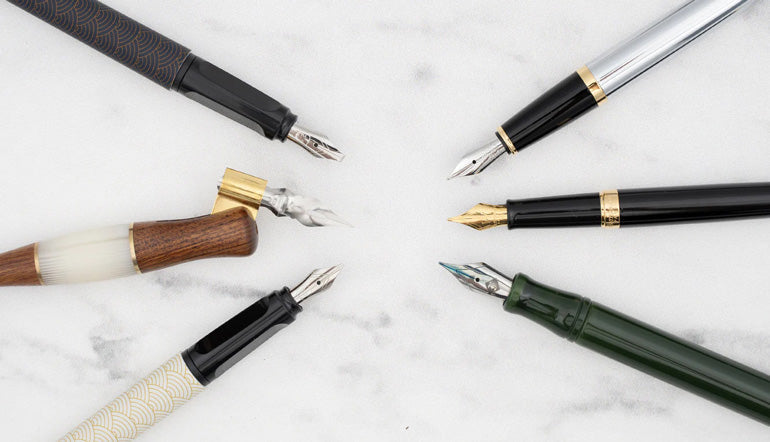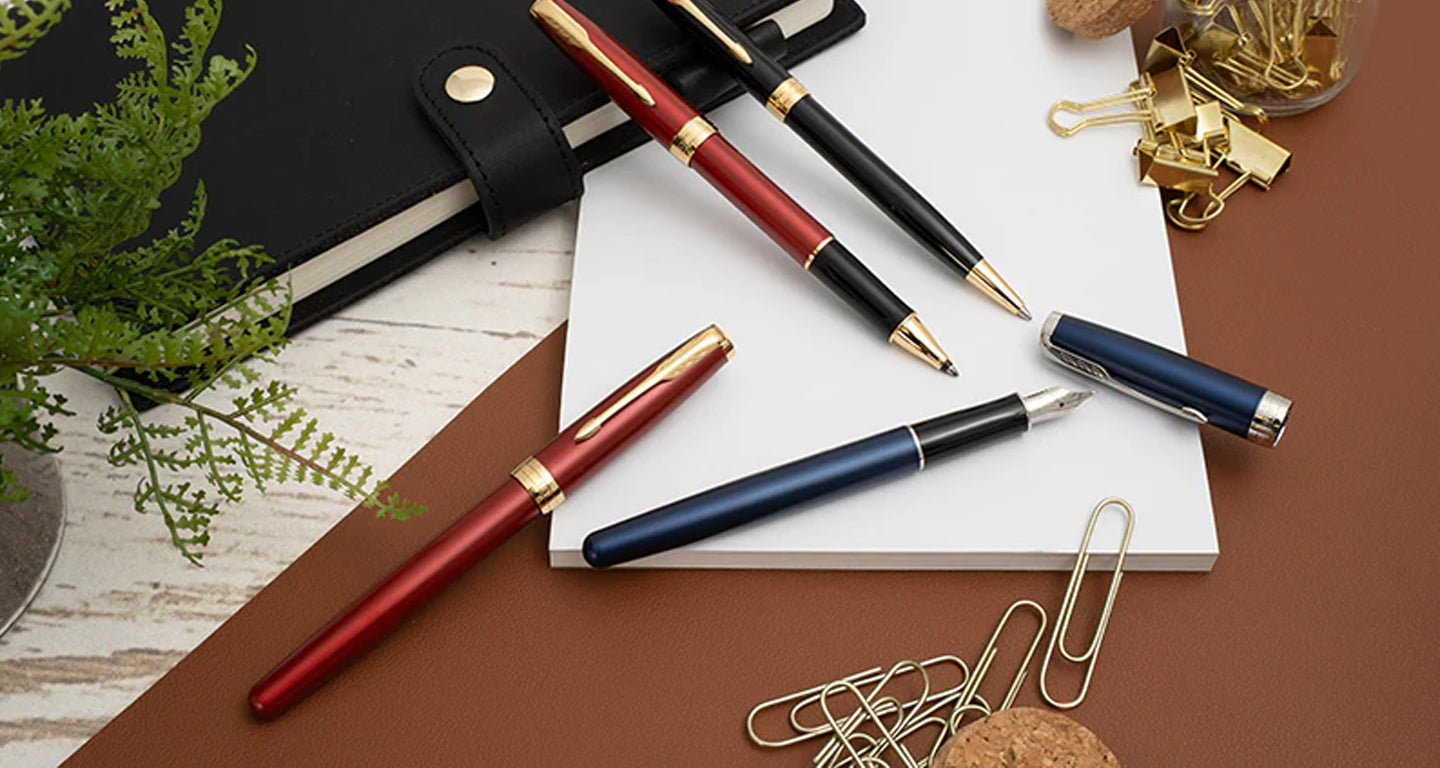
The Difference Between Fountain Pens and Calligraphy Pens
They may look the same to the untrained eye, but a fountain pen and a calligraphy pen are two completely different tools that can make or break a user depending on which one they are using for a task.
Today I am going to break down the subtle differences between these two pens and tell you which one you should be using when.
What is a Fountain Pen?
A fountain pen is a writing tool that uses an internal reservoir to release ink onto paper via a nib when writing.
Various types of fountain pens exist, differing by filling mechanism, nib style, and nib size.
What is a Calligraphy Pen?
Calligraphy pens are specially designed for drawing and lettering. They are typically used on invitations, greeting cards and certificates to create artistic effects.

What are the Differences Between the Two?
There are three major differences between the fountain pen and the calligraphy pen:
The Writing Points
As a general rule, calligraphy nibs are more flexible and have a greater variety of points.
Nibs can be found from sharp, pointed to broad, flat-ridged and everything in between. There are even glass pens with glass nibs.
These enable the users to create varying line widths easily.

Fountain pens will have some different types of nib, but the margins in those nibs are much smaller.
The distinction between fine and broad fountain pen nibs will be very small compared to calligraphy nibs.
This allows for a nib more tuned to daily writing and note taking versus hand lettering and drawing.
Expert Tip: Paper MATTERS when writing with a fountain or calligraphy pen. To learn the pitfalls of bad paper and get recommendations on what paper to use, check out my article on the Best Paper for Fountain Pens.
The Reservoir
Fountain pens have an internal ink reservoir that draws ink down to the paper.

Calligraphy pens can have internal ink reservoirs, but more often than not true calligraphy pens are dip pens, meaning you dip the nib into an ink well to gather ink on the tip before writing.
This is ideal since calligraphy ink is not kind to internal pen mechanisms (it can be corrosive) and is thicker as I will discuss next.
The Ink
Calligraphy ink is highly viscous, meaning it has a thick consistency and flows slowly. This affords the user greater control over line variations and stroke styles as they write.
In contrast, fountain pen ink is formulated to flow smoothly, making it suitable for everyday writing. It is thin enough to flow consistently through the fine channels of a fountain pen to ensure no interruptions occur during use.

Typically, fountain pen inks are not water resistant since they need to remain water soluble to avoid clogging the pens.
Helpful Hint: How to Properly Store a Fountain Pen
Calligraphy inks, on the other hand, are water resistant and even waterproof once they dry. This is a more durable ink for artwork and lettering.
The table below summarizes key differences between fountain pens and calligraphy pens:
| Feature | Calligraphy Pens | Fountain Pens |
| Nib type | Broad-edged, pointed, or flexible nibs | Medium or fine nibs |
| Ink supply | Dipped into ink manually | Internal reservoir or ink cartridges |
| Line variation | High flexibility, better for intricate styles | Limited flexibility, suitable for basic styles |
| Ease of use | Requires practice and skill | Easier to use, more suitable for beginners |
| Versatility | Best for dedicated calligraphy | Can be used for both calligraphy and everyday writing |
| Cost | Generally lower cost | Can be more expensive, especially with quality pens |
| Best for | Advanced users, traditional calligraphy artists | Beginners, modern calligraphy enthusiasts |
Can Fountain Pens Be Used for Calligraphy?
Although fountain pens can be used for calligraphy, they are not specifically designed for this purpose and have their limitations.
The fixed nib size of a fountain pen yields a consistent line, unlike a calligraphy pen whose nib is built to produce varying line widths.
If you’d like to use a fountain pen for calligraphy, keep the following considerations in mind.
Look for pens with italic or oblique nibs. Such nibs have a flat edge that gives you varied stroke weights without you having to swap your nib every time you want a thinner or thicker line.
Flex nibs are also great for fountain pen calligraphy since they allow for line variation based on how much pressure you apply while writing.
When doing calligraphy with fountain pens, spend time practicing with a specific pen and nib combination. This allows you to get used to your pen and understand its capabilities and limitations.
In addition, remember to use high-quality ink to enjoy smooth writing and easy ink flow.
Conclusion
That covers the major differences between a fountain pen and a calligraphy pen.
If you are looking to draw, hand letter, or try out some more nuanced techniques with a pen, go calligraphy pen.
If you want to enjoy fluid writing, note taking, or signatures, a fountain pen will be great.
What do you prefer to use?
Leave a comment below with your favorite fountain pen or calligraphy tools.
|
Sam Di Nardo is an author for Dayspring Pens, where she has honed her expertise in ballpoint, rollerball, gel and fountain pens since joining the team in 2018. From her initial role as an Engraver to becoming the Production Manager, Sam's journey has been marked by her passion for the history, manufacturing, and the unique value of gifted writing instruments. A graduate of Regent University with a degree in English Literature and a special interest in Old Norse literature, dive deeper into Sam's world and discover why she's your trusted guide in the realm of gift pens. |
Share


